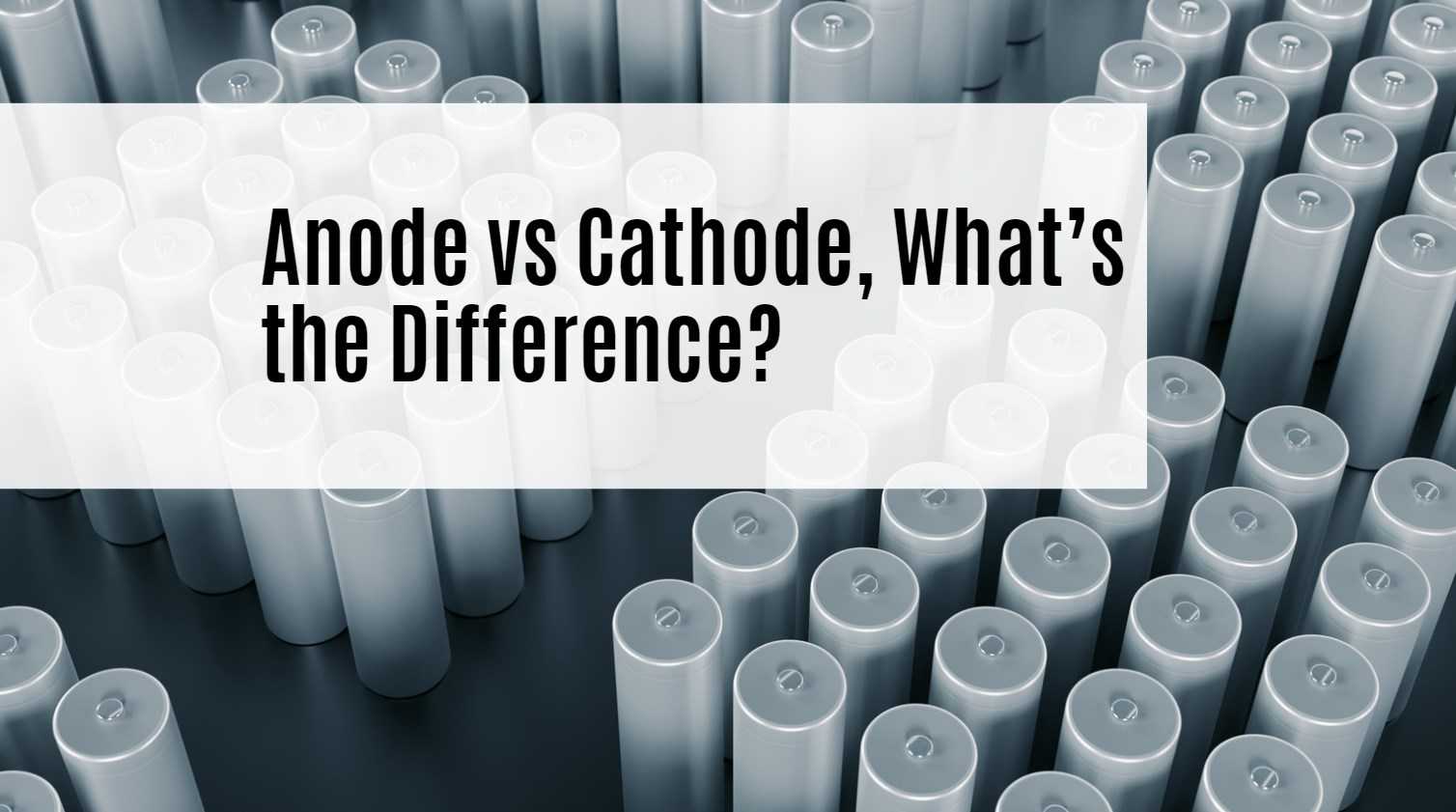The anode and cathode in a battery are electrodes with opposite electrical charges and roles during discharge: the anode is the negative electrode that releases electrons and lithium ions, while the cathode is the positive electrode that accepts electrons and lithium ions. Their materials and functions are essential for battery performance and energy flow.
What Is an Anode in a Lithium Battery?
The anode in a lithium battery is the negative electrode during discharge, typically made of porous graphite. It releases lithium ions into the electrolyte and electrons into the external circuit to provide power. The anode must allow efficient intercalation of lithium ions and maintain structural stability during charge and discharge cycles.
Graphite is the most common anode material due to its high conductivity, availability, and stable, layered structure. Advanced materials like silicon and lithium metal are being explored to increase energy density. In lithium-ion batteries, the anode plays a critical role by storing and releasing lithium ions to drive the battery’s electrical current.
Wholesale lithium golf cart batteries with 10-year life? Check here.
What Is a Cathode in a Lithium Battery?
The cathode is the positive electrode in a lithium battery during discharge. It accepts lithium ions from the electrolyte and electrons from the external circuit. Cathode materials typically include layered metal oxides such as lithium cobalt oxide (LiCoO₂), lithium iron phosphate (LiFePO₄), or nickel manganese cobalt oxide (NMC).
The cathode’s material composition determines battery capacity, voltage, and longevity. It undergoes reduction reactions by gaining electrons, which is essential for the battery’s ability to store and deliver electrical energy effectively.
Want OEM lithium forklift batteries at wholesale prices? Check here.
How Do Anode and Cathode Work Together in a Battery?
During discharge, lithium ions travel from the anode to the cathode through the electrolyte, while electrons flow through the external circuit from anode to cathode, powering devices. The battery’s operation depends on the chemical reactions at both electrodes:
-
The anode oxidizes, releasing electrons and lithium ions.
-
The cathode reduces, accepting electrons and lithium ions.
Charging reverses this flow, moving lithium ions back to the anode and electrons through the external circuit to restore energy. The coordinated functions enable rechargeable batteries like LiFePO₄ to cycle efficiently.
Which Materials Are Commonly Used for Anodes and Cathodes?
| Electrode | Common Materials | Key Properties |
|---|---|---|
| Anode | Graphite, Silicon, Lithium Metal | High electrical conductivity, stability, lightweight |
| Cathode | Lithium Cobalt Oxide (LiCoO₂), Lithium Iron Phosphate (LiFePO₄), Nickel Manganese Cobalt Oxide (NMC) | High energy density, voltage stability, cycle life |
This table highlights typical electrode materials. Innovations focus on improving energy capacity, charge speed, and safety, such as adopting silicon-based anodes or enhancing cathode chemistry.
Why Is Understanding the Anode vs Cathode Difference Important?
Knowing the difference between anode and cathode helps in understanding battery design, performance, and failure modes. It guides material selection for optimal energy density, power output, safety, and cycle life. For manufacturers like Redway Battery, specializing in LiFePO₄ batteries for forklifts and golf carts, mastering electrode material science enables delivering durable and efficient battery solutions.
This knowledge is also vital in troubleshooting battery issues, improving recycling processes, and advancing next-generation batteries with improved sustainability and functionality.
When Do Anode and Cathode Reverse Roles?
In rechargeable batteries, the anode and cathode switch functions during charging versus discharging cycles in terms of ion flow direction, but their electrical polarity remains consistent: the anode is negative during discharge and the cathode positive. This dynamic is fundamental to how rechargeable lithium-ion batteries store and release energy repeatedly without damage.
Can Anode or Cathode Materials Affect Battery Safety?
Yes, electrode materials critically impact battery safety. For example, lithium metal anodes offer high capacity but pose dendrite growth risks leading to short circuits. Cathode materials influence thermal stability; for instance, LiFePO₄ cathodes provide excellent safety and long cycle life compared to others like LiCoO₂.
Redway Battery integrates stable LiFePO₄ cathodes and advanced anode structures that balance high performance with robust safety, addressing industry demands for reliable and safe energy storage.
How Does Redway Battery Use Anode and Cathode Technology in Their Products?
Redway Battery emphasizes optimized combinations of graphite anodes and LiFePO₄ cathodes to deliver high-performance, long-lasting lithium battery packs for forklifts, golf carts, and energy storage. Their manufacturing leverages advanced material processing and quality controls to ensure consistent electrode performance, maximized energy density, and enhanced safety.
The engineering team supports OEM/ODM customization, aligning electrode design with specific client needs, making their lithium solutions reliable across diverse applications.
Redway Expert Views
“The interplay between anode and cathode chemistry is the cornerstone of lithium battery innovation. At Redway Battery, our focus on superior anode materials and stable LiFePO₄ cathodes allows us to push the boundaries in energy density and battery life while ensuring safety—a critical demand in industrial and recreational vehicles. This balanced approach is key to empowering customers with dependable, high-performing batteries globally.”
— Redway Battery Engineering Team
What Are Key Takeaways and Actionable Advice on Anode vs Cathode?
Understanding the anode vs cathode difference reveals how lithium batteries store and release energy via coordinated chemical reactions. Choose battery solutions with proven electrode materials like graphite anodes and LiFePO₄ cathodes for a balance of longevity, safety, and power.
For specialized uses such as forklifts or golf carts, partnering with experienced OEMs like Redway Battery ensures customized electrode technology matching rigorous demands. Stay informed about emerging materials, especially silicon anodes and evolving cathodes, to anticipate next-generation battery improvements.






